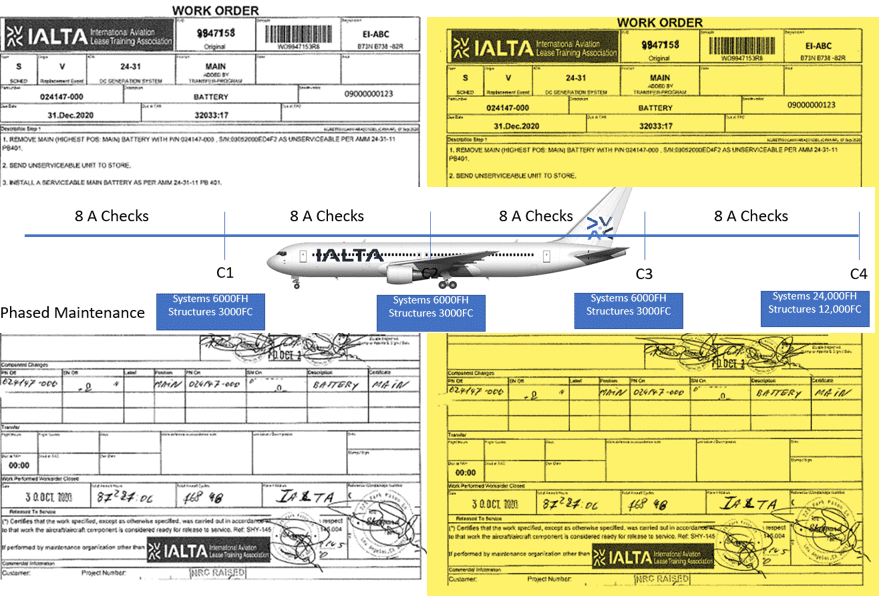An aircraft is maintained in an airworthy condition by many conditions being met; one of these conditions is the scheduled maintenance being completed as per the approved maintenance plan for the aircraft.
What will happen is over the operation defects arise that are recorded in a logbook, and they must be actioned or assessed to continue operation. This could be a simple change of a part, such as tyre worn and the wheel is replaced, or maybe a valve fails, and it can be replaced.
There are also times when the defect might not be fixed and instead the aircraft using approved maintenance and operational documentation can continue for a time period with the defect not rectified. This item then becomes known by one of several terms that define it as a defect that is deferred.
ADD – Acceptable Deferred Defect.
HIL – Hold Item List.
This maintenance is often affecting short-term planning as we need to repair the items in a given time frame measured in HRS or Cycles or Calendar time (sometimes several limits are given and the most restrictive often applies).
While such options are beneficial to continue operation, they can often have operational consequence which means increase fuel load or even an affect on the aircraft capability such as its ability to perform an automated landing or how far it can operate from a divert airport – the list of examples is vast for this.
Items like this are very important for a lease transition on several points including two examples as
noted below:
1 – Deferred defects or items in the hold items list are generally not accepted and must be repaired prior to lease hand back / aircraft acceptance. It may be possible to negotiate a financial arrangement in some cases.
2 – Repeat defects – this is a defect which has a history on the aircraft and although it might be closed by maintenance as they can not repeat the fault, it returns within a specified time frame.
These defects may well be chargeable back to the prior lessee / lessor depending on what stage of the transition you represent.
There are of course multiple considerations for such items and depending on how the lessee / airline CAMO works the Maintenance Information System (MIS) the details of such defects can be found in multiple locations.
Please check out our full range of Aircraft Technical Lease Training courses here
Follow us on LinkedIn for more.
